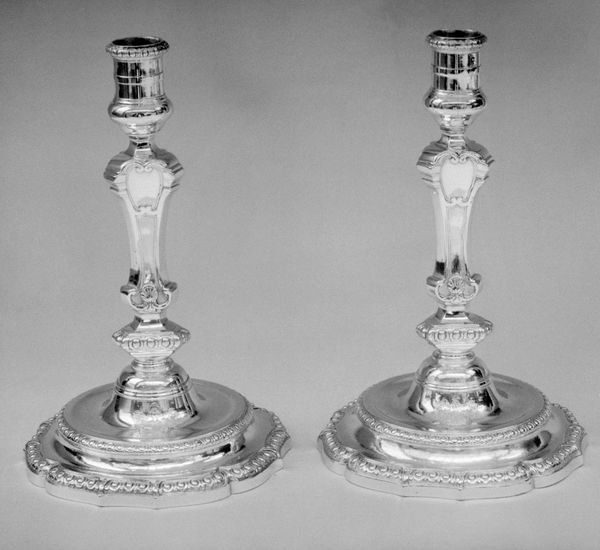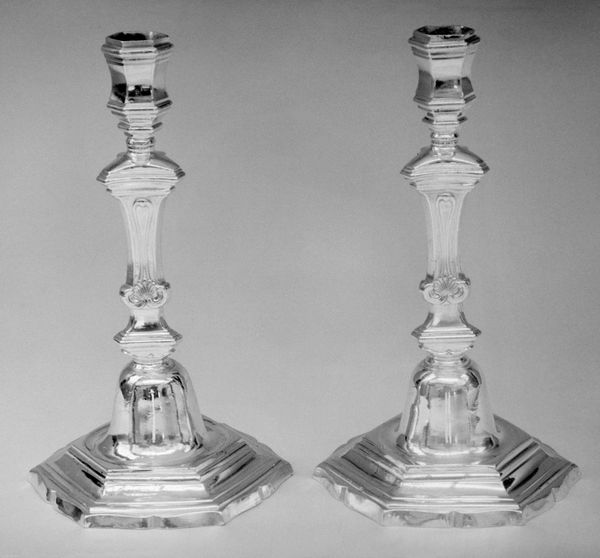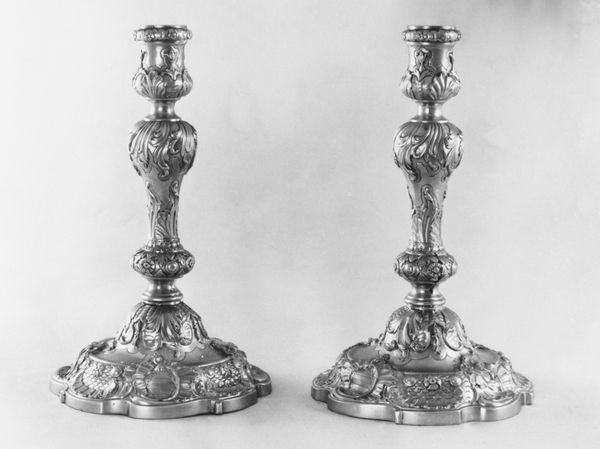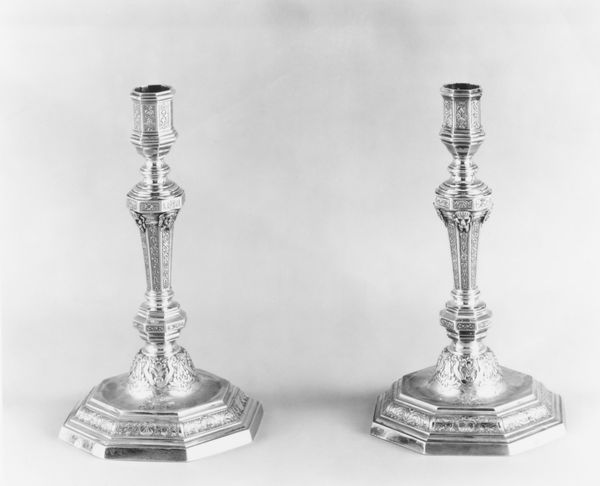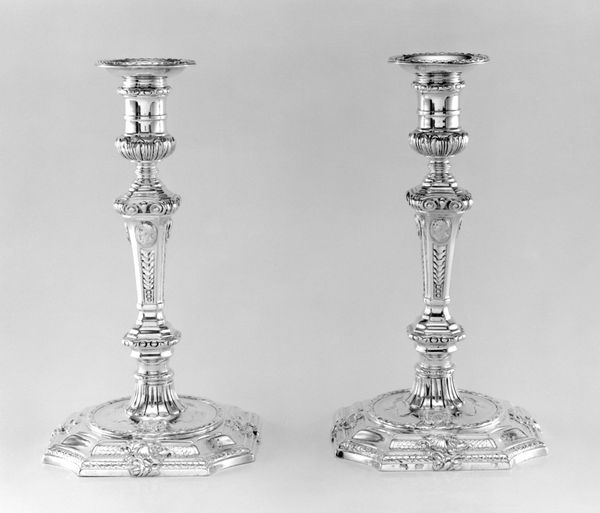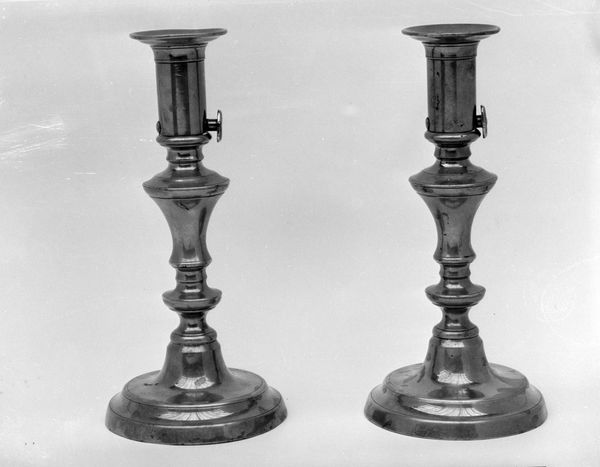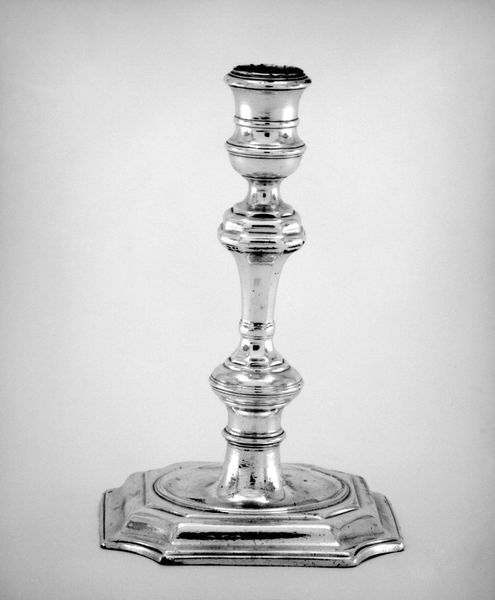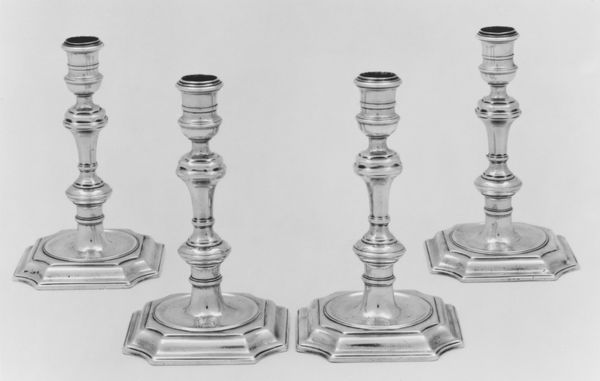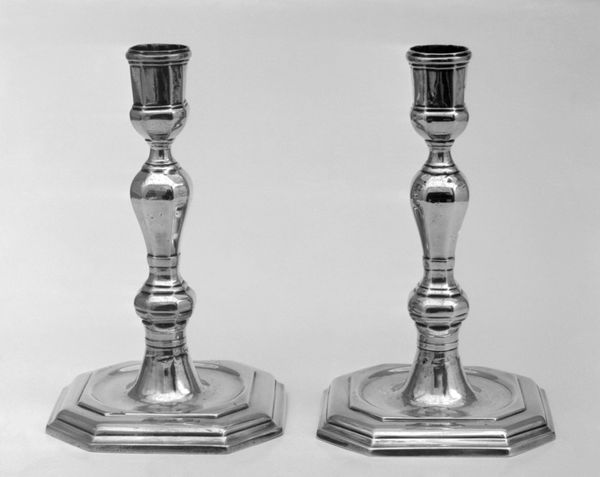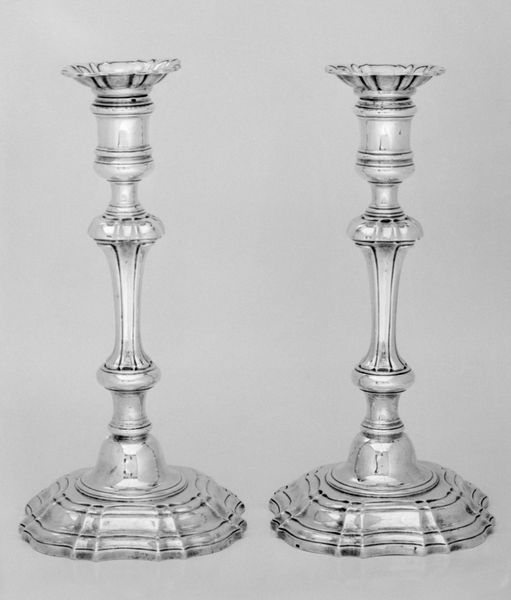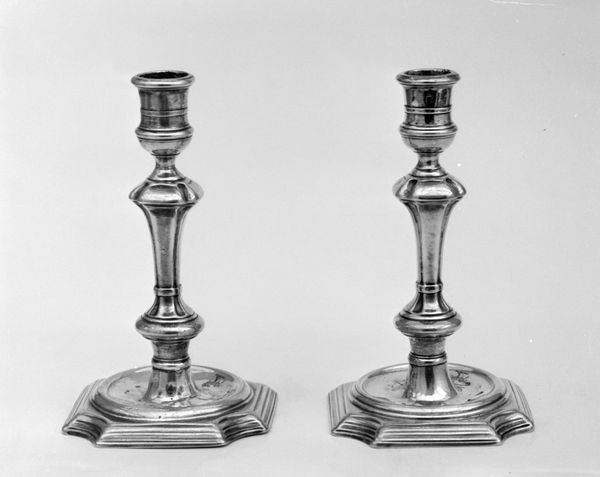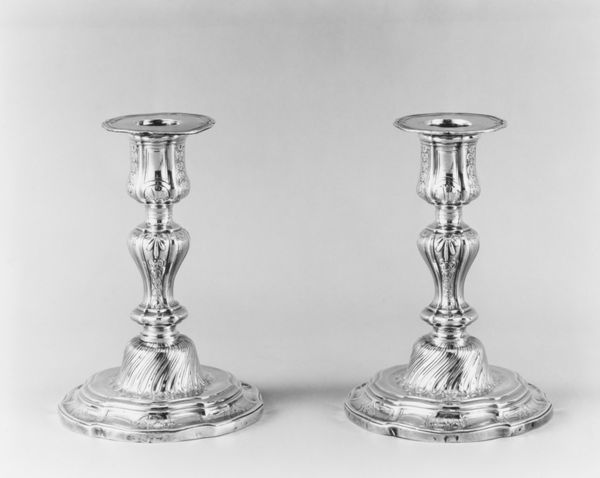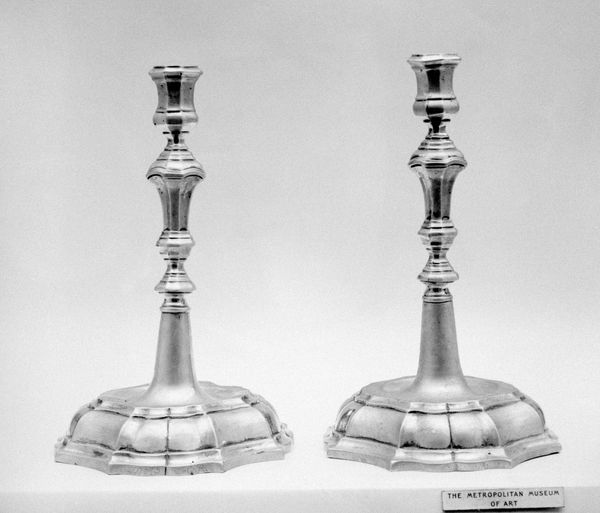
Dimensions: Height (each): 10 1/4 in. (26 cm)
Copyright: Public Domain
Editor: So, these are a pair of silver candlesticks, dating from around 1763-1764, by Jean-François Balzac. They are currently housed at the Metropolitan Museum of Art. They strike me as rather opulent, wouldn't you agree? All those swirling lines and that highly reflective silver. What do you see in this piece? Curator: Opulence, yes, but also the careful orchestration of light and shadow. Consider how the silversmith deliberately manipulates form. Each curve, each facet, isn't merely decorative; it's a calculated choice to catch and redirect candlelight, to imbue a space with warmth and drama. These candlesticks are not simply functional objects. They signify wealth, sure, but beyond that, ritual. Editor: Ritual, how so? Curator: Light has always been deeply symbolic, representing knowledge, divinity, hope. Think of the candles used in religious ceremonies, birthday celebrations, or even a romantic dinner. What feelings are associated to ritual and repetition for you? Editor: Security and grounding. Curator: Precisely. And how does this aesthetic tie into the Baroque style? Notice the rejection of straight lines, the embrace of dynamism. It’s as if the candlesticks are eternally in motion, a visual metaphor for the fleeting nature of time and the burning desire to seize the moment. Editor: That's insightful. I hadn’t considered the connection between the Baroque aesthetic and the passage of time. It’s more than just decoration. Curator: Exactly. By understanding the visual vocabulary of an object, we can start to unlock the deeper cultural memories it holds, from personal nostalgia to collective identity. The light guides our gaze back in time. Editor: I'll definitely be seeing these pieces differently now. Thanks for opening my eyes!
Comments
No comments
Be the first to comment and join the conversation on the ultimate creative platform.
